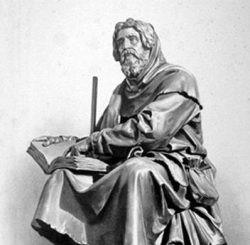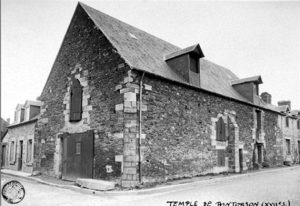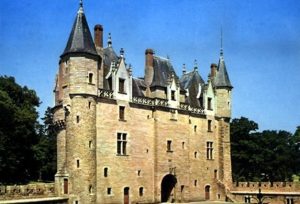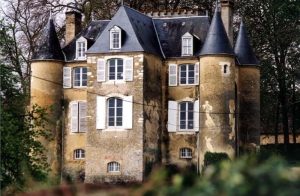A village of sanctuary for centuries
On the border between the regions of the Haute-Loire and Ardèche, Le Chambon-sur-Lignon lies at the heart of the Vivarais-Lignon plateau. Most of its population, and that of other villages in the neighbourhood are Protestant, and have traditionally been ready to welcome and protect the persecuted and the destitute, be they refractory priests during the Revolution, or poor children from the coal mining area around Saint Etienne taken in by the charitable organization “Children in the Mountains”, created by the Rev. Louis Comte at the end of the 19th century.
Even before World War II broke out, many refugees found shelter with inhabitants of the plateau. Of republican tradition they had been made aware by their pastors of the dangers of totalitarianism and antisemitism. Between 1937 and 1939 successive waves of families fleeing the civil war arrived from Spain, as well as the first refugees (fleeing Nazism) from Austria and Germany. In October 1938, Charles Guillon, former pastor and mayor of Chambon sent a letter to the inhabitants to thank them for unselfishly welcoming those who had fled from central Europe and that they “be ready to welcome into your homes the hundreds of children we wish to entrust to you, for their protection”.
The most extensive rescue operation of Jews in France during the Occupation
It was mainly Jews from other countries, and then French Jews who would be saved ; representing “the most extensive collective rescue of Jews in France during the Occupation”.
In December 1940 the Cimade was present in internment camps in the South of France, (such as Gurs, Rivesaltes and Milles) and it opened refugee centres, such as the Côteau fleuri near Chambon sur Lignon.
The antisemite measures of the Vichy government boosted the mobilisation of Protestants. After the August 1942 raids on Jews, the Protestants, Reformed, Brethren or Free, joined with Catholic communities on the plateau, and opened their doors to the “wondering Jews”, “turning each farm into a place of refuge, each kitchen into a shelter.”
Several hundreds of children were saved thanks to the action of Cimade or the Young Men’s Christian Association, (the YMCA, represented in Chambon by Charles Guillon) or the Organisation de Secours aux Enfants (Help the Children). The children attended the local public schools in the various villages or the Ecole Nouvelle Cévenole in Chambon. Swiss Aid was also precious as between 1941 and 1942 three childrens’ homes were founded, (La Guepsy, Abric and Faïdoli). Teenagers and students of all confessions from all those countries occupied by the Nazis were welcomed at Grillons, Côteau fleuri and at the university residence of Roches. They were later replaced by opponents to the Service du Travail Obligatoire (Mandatory Work Service) and by “shadow fighters” from the first resistance organisations.
A few names among the most famous
A great number of names could be cited. Among the 13 pastors of the 12 parishes of the plateau, those of Chambon must be named, André Trocmé, Edouard Theis, Noël Poivre.
Many women played a key role : Mireille Philip, the wife of André Philip, one of General de Gaulle’s ministers, hid Jews, helped organise escape networks to Switzerland, and later took part in armed resistance. Dora Rivière, Madeleine Dreyfus, Simone Mairesse, organised the assignment of the refugees to the farms. To these names should be added those of the heads of boarding schools and hotel directors, teachers and doctors. The significant feature (of this story) is that in farms and in hamlets, a whole population, an anonymous crowd, sheltered, welcomed, housed and saved people.
Forged identification papers and crossing borders
The Cimade’s forged identification papers, and those of town-hall secretaries or gifted forgers protected the refugees and enabled their escape by underground networks. First they headed to Spain, but the Pyrennees were difficult to cross and General Franco’s troops did not make escaping to Portugal or Morocco easy. Then they went to the “refuge” that was Geneva, either through the mountains to Martigny accompanied by Cimade helpers who knew the area well, or by the plain, stopping over at the manses in Romans, Grenoble and Annecy.
The rounded up and the rescued
Did Chambon “a nest full of Jews on Huguenot ground” escape the laws of war, as a protected sanctuary enjoying a relative immunity on the part of the prefect of Haute Loire, or maybe by the Wehrmacht or even the Gestapo ? Not at all, and on 29 June 1943, the Gestapo raided the Maison des Roches and about twenty young people were arrested and sent to the concentration camps of Buchenwald and Auschwitz ; the teacher Daniel Trocmé, a cousin of the pastor, died in the camp at Maidanek.
The exact number of refugees on the plateau is impossible to verify, but probably between 3,500 and 5,000. If other Protestant areas, such as the Cévennes, Vabre in the Tarn region and Dieulefit in the Drome, (nicknamed “oasis of peace”) acted in a similar way, the importance of this number makes of Chambon sur Lignon the very symbol of the attitude of French protestantism towards the victims of Nazism, especially the Jews.
The population of Chambon sur Lignon received the honour of “Righteous among the nations”, and was the only example of such an attribution to a community.





